Abstract
Savage-Rumbaugh et al.'s (1993) monograph describes a study that compared the language comprehension of an 8-year-old ape (a bonobo named Kanzi) with that of a normal 2-year-old human (Alia). The primary purpose of the research was to see if Kanzi could comprehend novel and compound spoken English commands without imitative prompts, contrived reinforcement contingencies, or explicit training procedures. As it turned out, Kanzi acquired a complex comprehension repertoire in a pattern similar to the human child's and even performed better than the human child in many cases. Although this review describes these empirical results favorably, it questions the authors' claim that the subjects learned the repertoire on their own, without reinforcement or training. A close examination of the subjects' histories and of the procedures, transcripts, and videos suggested that the training and testing procedures involved a number of independent variables and processes that were not discussed by the authors, including conditioned reinforcement and punishment, verbal prompts, stimulus control, establishing operations, and extinction. Nonetheless, the methodological and empirical contributions to ape and human language research are substantial and deserve behavior analysts' attention and support. Behavior analysts could contribute to this kind of research by applying the analytic and conceptual tools of behavior analysis in general and the concepts from Verbal Behavior (Skinner, 1957) in particular.
Keywords: apes, verbal comprehension, verbal behavior, novel behavior, nonhuman verbal behavior
Full text
PDF
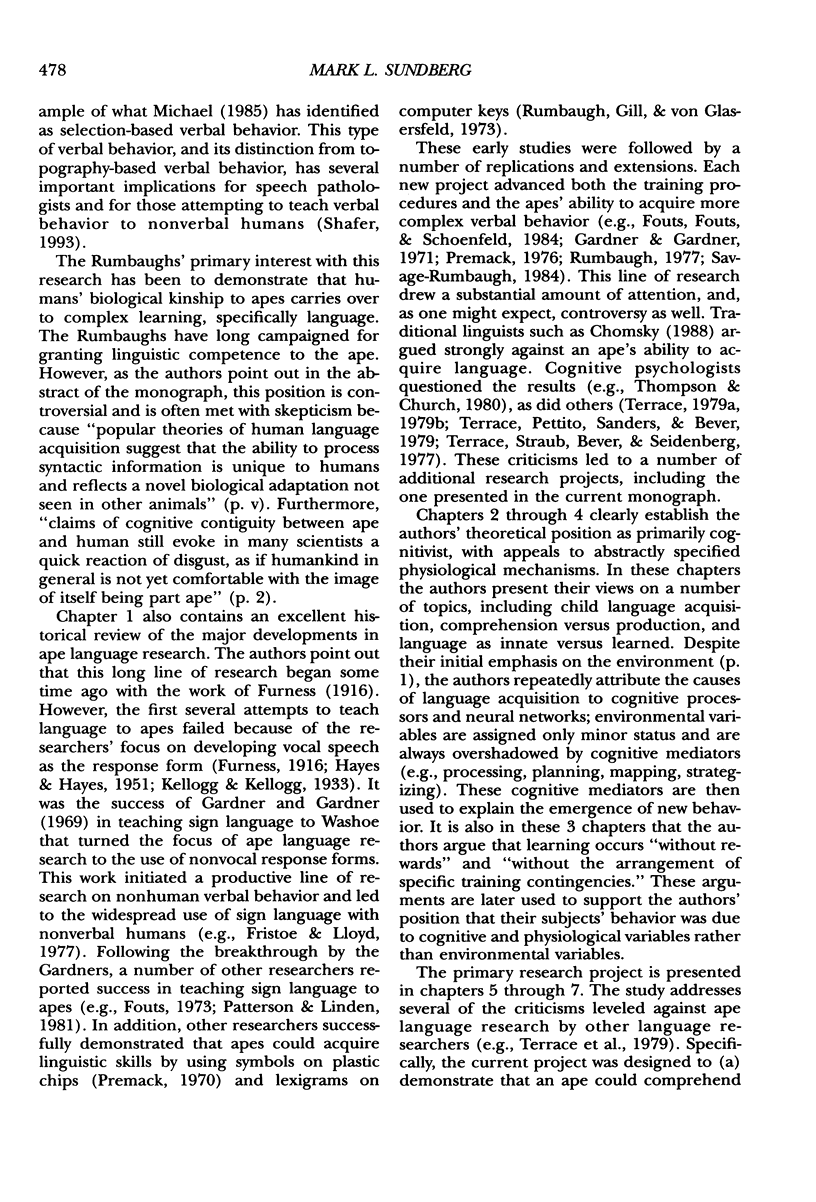



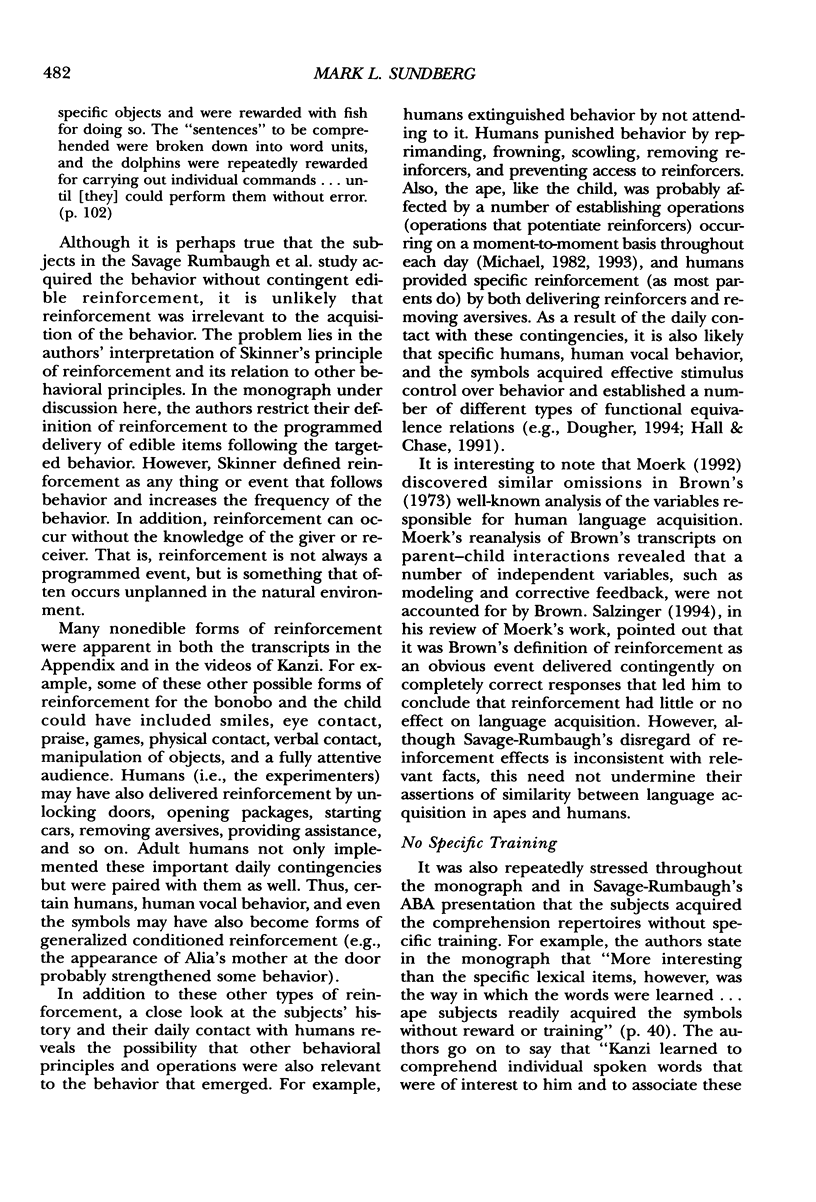

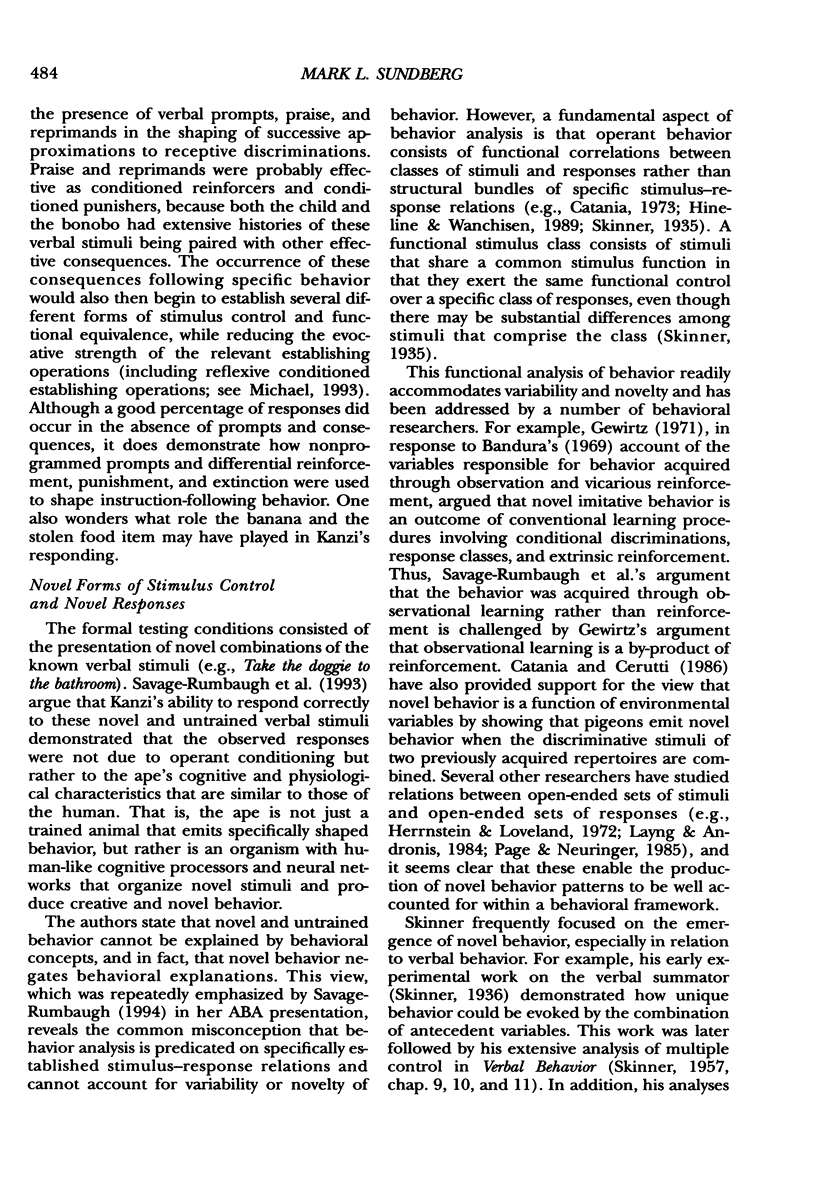
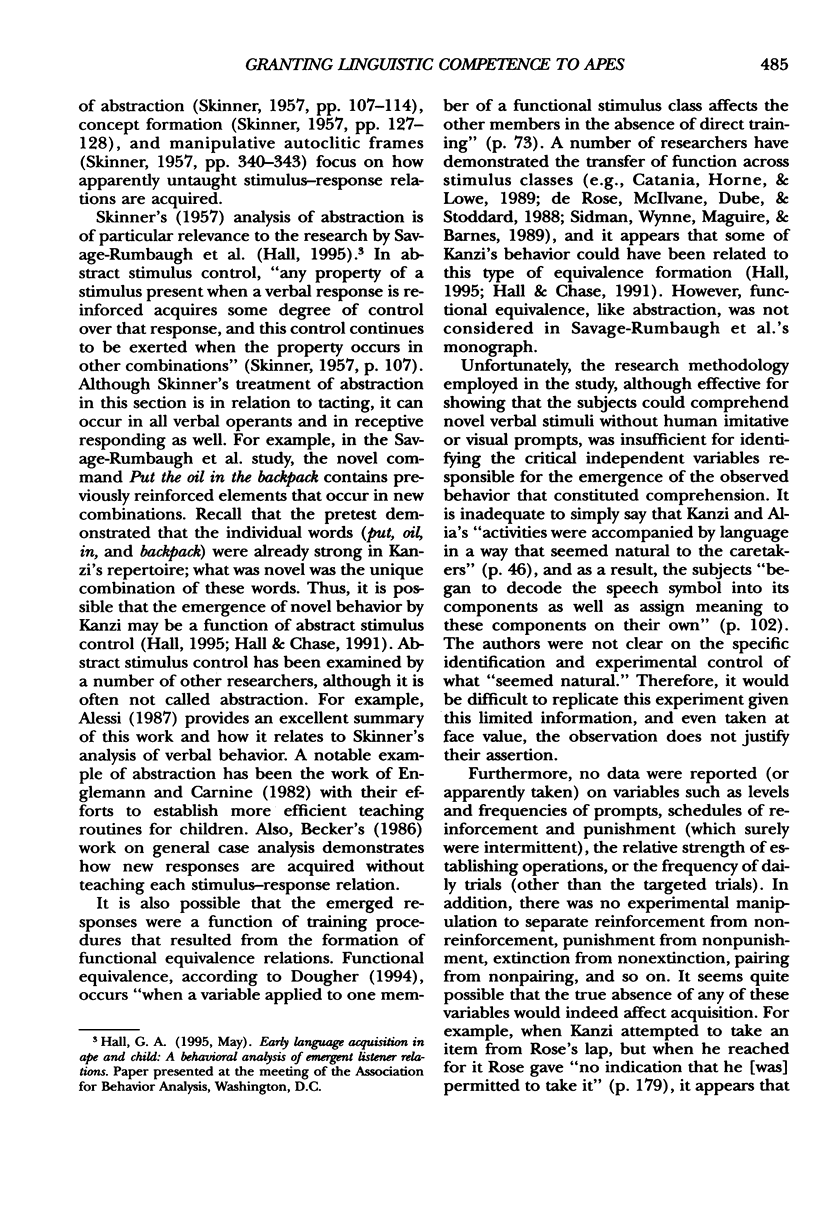

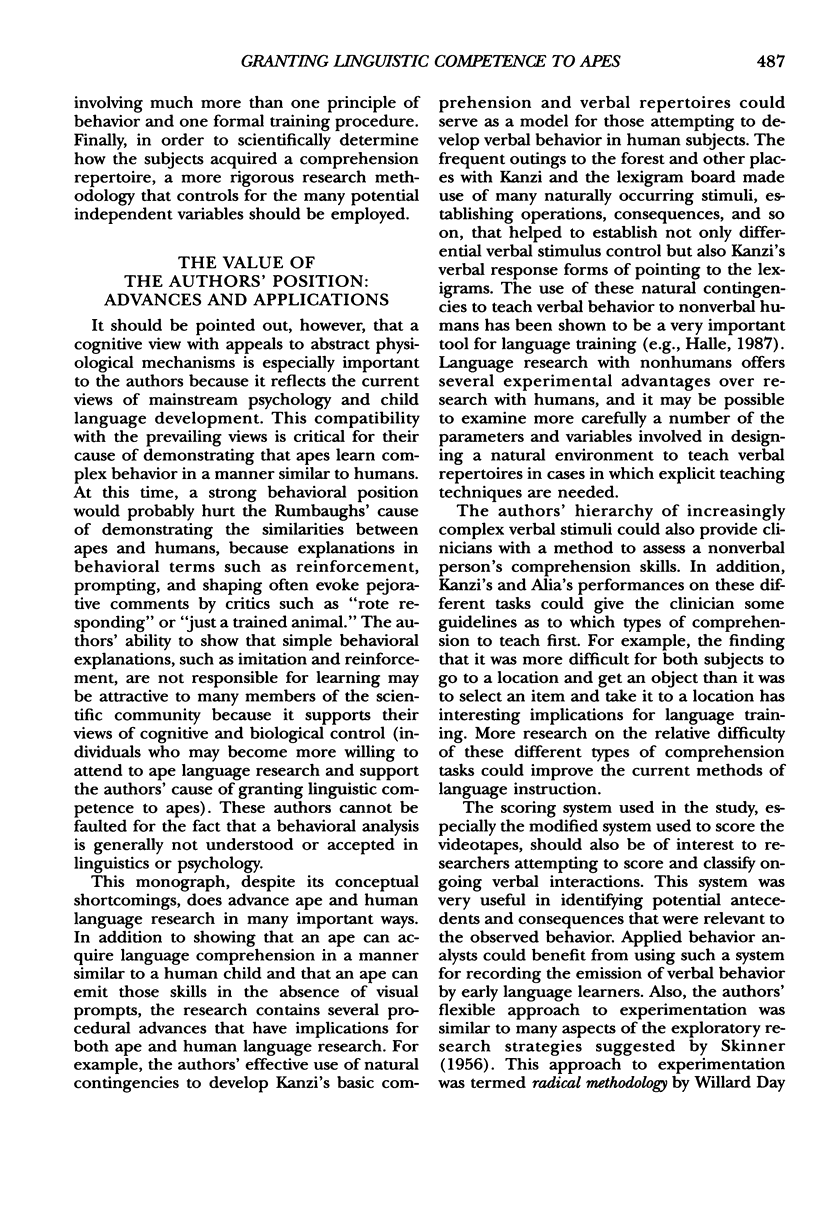
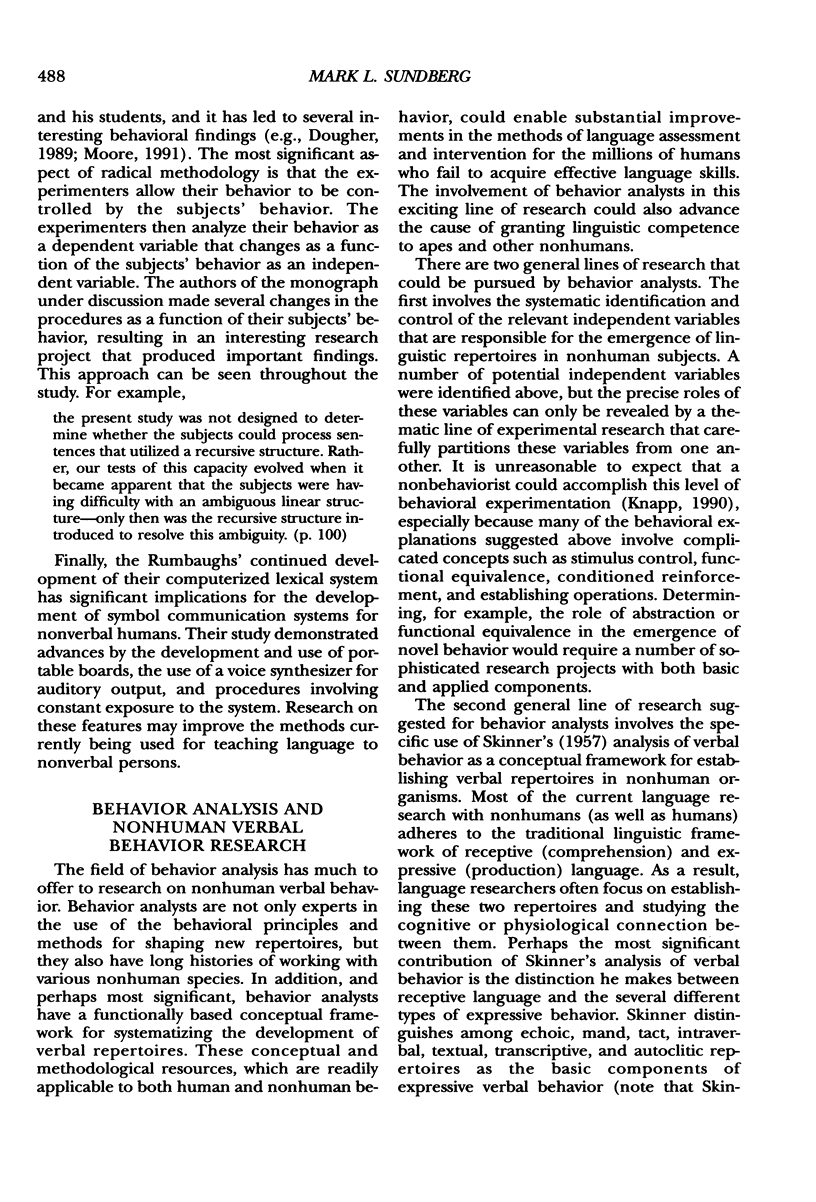
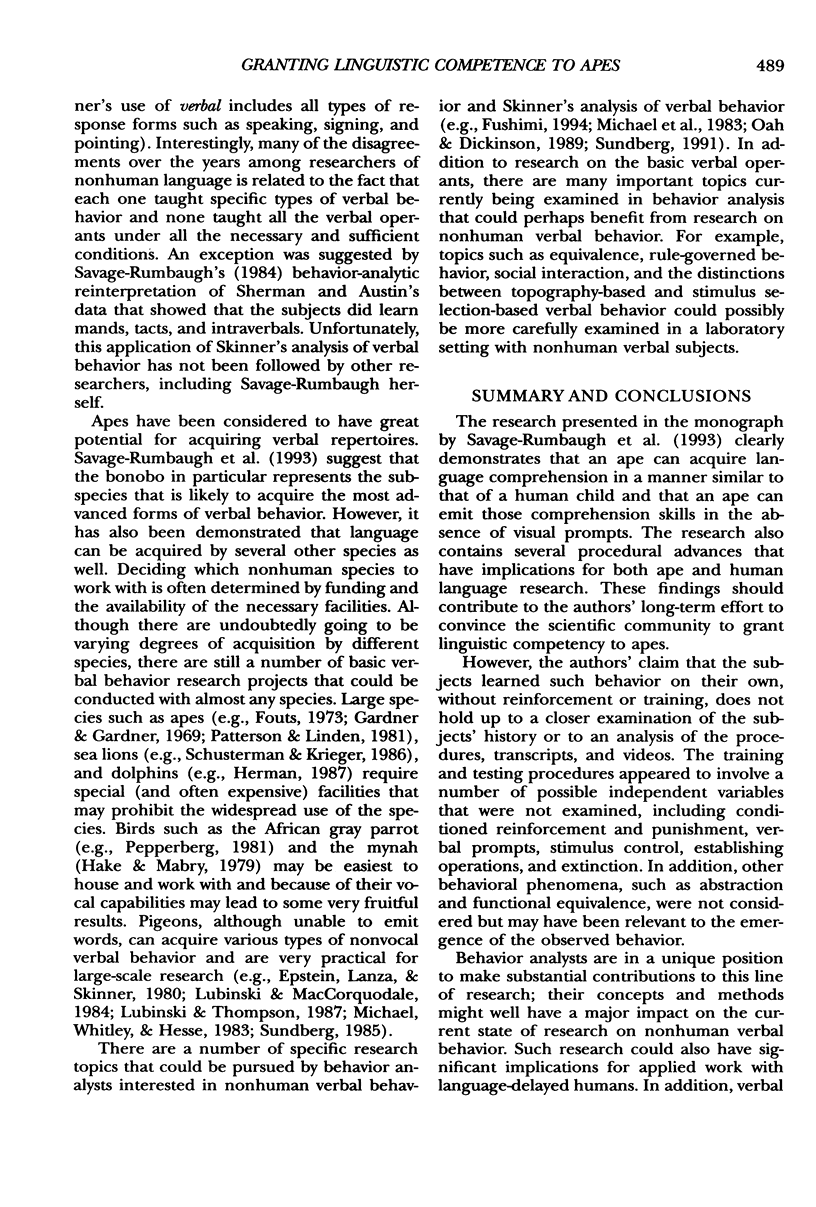
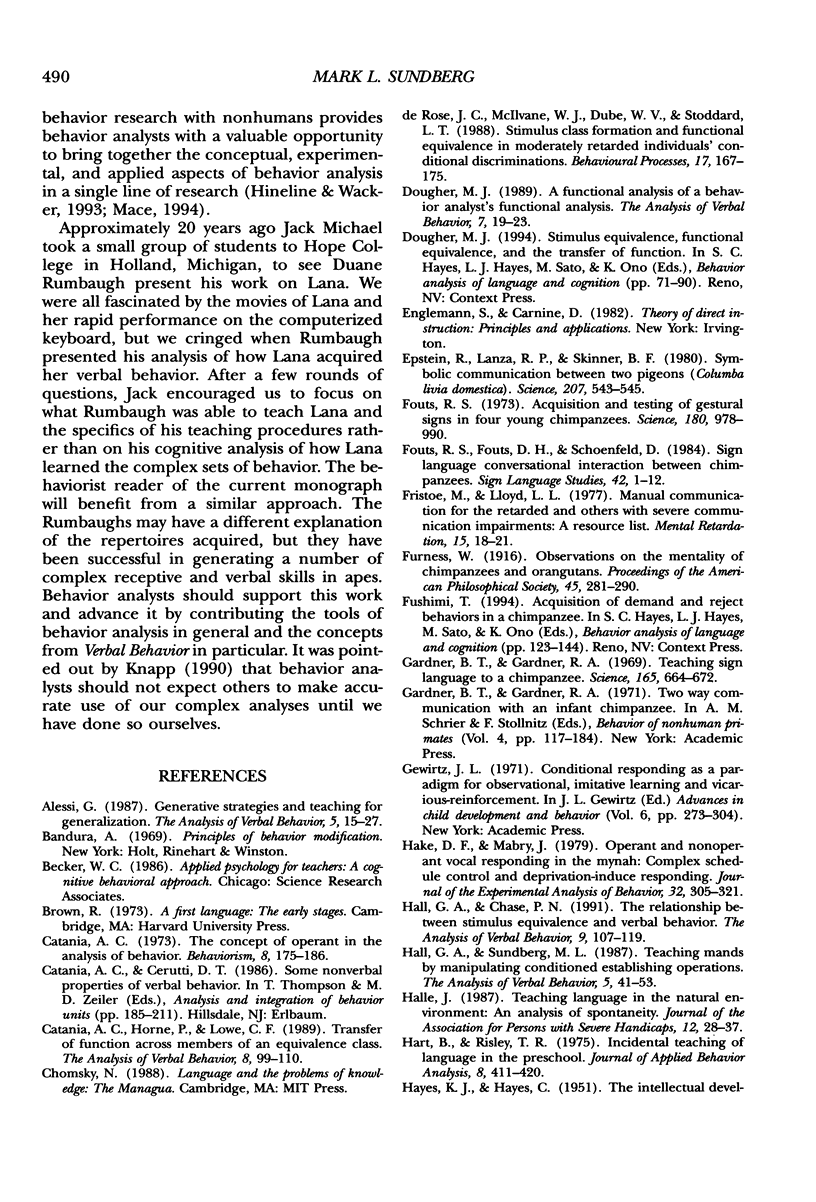
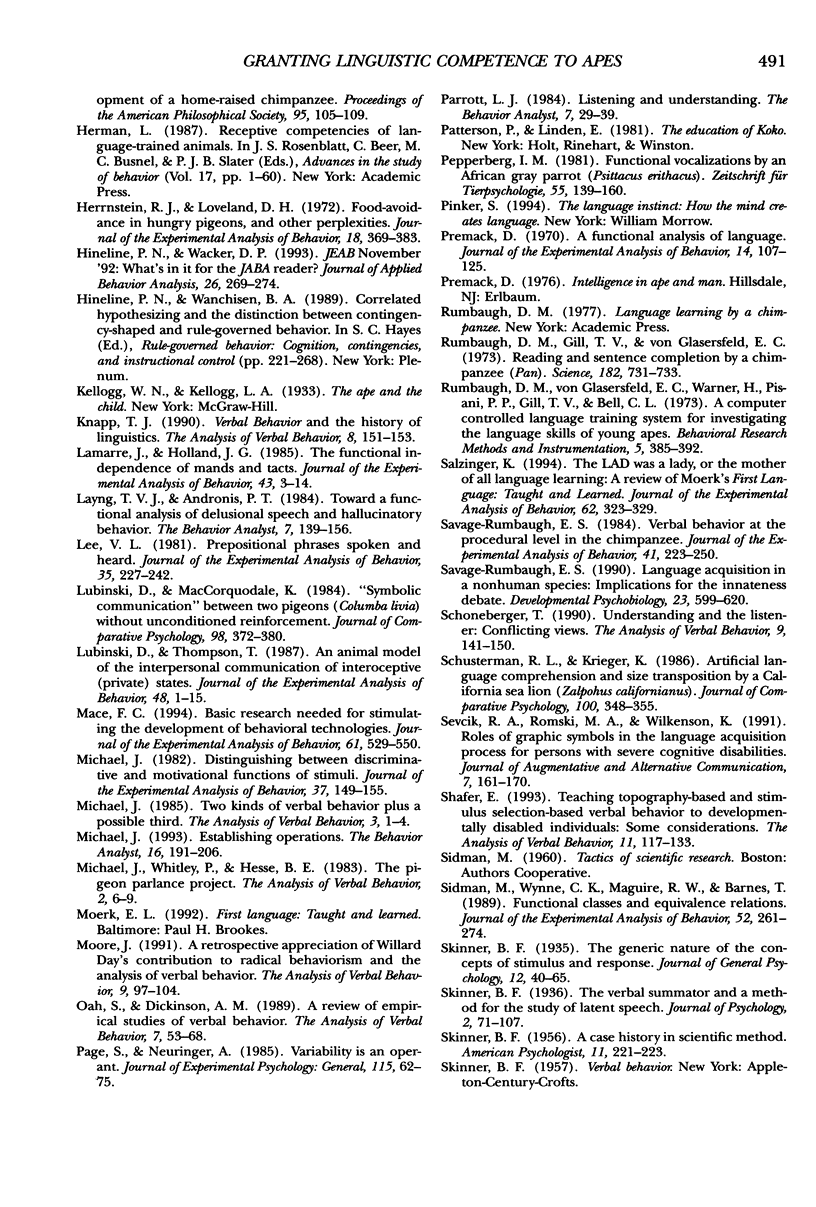

Selected References
These references are in PubMed. This may not be the complete list of references from this article.
- Epstein R., Lanza R. P., Skinner B. F. Symbolic Communication Between Two Pigeons, (Columba livia domestica). Science. 1980 Feb 1;207(4430):543–545. doi: 10.1126/science.207.4430.543. [DOI] [PubMed] [Google Scholar]
- Fouts R. S. Acquisition and testing of gestural signs in four young chimpanzees. Science. 1973 Jun 1;180(4089):978–980. doi: 10.1126/science.180.4089.978. [DOI] [PubMed] [Google Scholar]
- Fristoe M., Lloyd L. L. Manual communication for the retarded and others with severe communication impairment: a resource list. Ment Retard. 1977 Oct;15(5):18–21. [PubMed] [Google Scholar]
- Gardner R. A., Gardner B. T. Teaching sign language to a chimpanzee. Science. 1969 Aug 15;165(3894):664–672. doi: 10.1126/science.165.3894.664. [DOI] [PubMed] [Google Scholar]
- Gewirtz J. L. Conditional responding as a paradigm for observational, imitative learning and vicarious-reinforcement. Adv Child Dev Behav. 1971;6:273–304. doi: 10.1016/s0065-2407(08)60085-3. [DOI] [PubMed] [Google Scholar]
- Hake D. F., Mabry J. Operant and nonoperant vocal responding in the mynah: Complex schedule control and deprivation-induced responding. J Exp Anal Behav. 1979 Nov;32(3):305–321. doi: 10.1901/jeab.1979.32-305. [DOI] [PMC free article] [PubMed] [Google Scholar]
- Hart B., Risley T. R. Incidental teaching of language in the preschool. J Appl Behav Anal. 1975 Winter;8(4):411–420. doi: 10.1901/jaba.1975.8-411. [DOI] [PMC free article] [PubMed] [Google Scholar]
- Herrnstein R. J., Loveland D. H. Food-avoidance in hungry pigeons, and other perplexities. J Exp Anal Behav. 1972 Nov;18(3):369–383. doi: 10.1901/jeab.1972.18-369. [DOI] [PMC free article] [PubMed] [Google Scholar]
- Hineline P. N. JEAB, November '92: What's in it for the JABA reader? J Appl Behav Anal. 1993 Summer;26(2):269–274. doi: 10.1901/jaba.1993.26-269. [DOI] [PMC free article] [PubMed] [Google Scholar]
- Lee V. L. Prepositional phrases spoken and heard. J Exp Anal Behav. 1981 Mar;35(2):227–242. doi: 10.1901/jeab.1981.35-227. [DOI] [PMC free article] [PubMed] [Google Scholar]
- Lubinski D., Thompson T. An animal model of the interpersonal communication of interoceptive (private) states. J Exp Anal Behav. 1987 Jul;48(1):1–15. doi: 10.1901/jeab.1987.48-1. [DOI] [PMC free article] [PubMed] [Google Scholar]
- Mace F. C. Basic research needed for stimulating the development of behavioral technologies. J Exp Anal Behav. 1994 May;61(3):529–550. doi: 10.1901/jeab.1994.61-529. [DOI] [PMC free article] [PubMed] [Google Scholar]
- Michael J. Distinguishing between discriminative and motivational functions of stimuli. J Exp Anal Behav. 1982 Jan;37(1):149–155. doi: 10.1901/jeab.1982.37-149. [DOI] [PMC free article] [PubMed] [Google Scholar]
- doi: 10.1901/jeab.1979.31-161. [DOI] [PMC free article] [Google Scholar]
- doi: 10.1901/jeab.1994.62-323. [DOI] [PMC free article] [Google Scholar]
- Premack D. A functional analysis of language. J Exp Anal Behav. 1970 Jul;14(1):107–125. doi: 10.1901/jeab.1970.14-107. [DOI] [PMC free article] [PubMed] [Google Scholar]
- Rumbaugh D. M., Gill T. V., von Glasersfeld E. C. Reading and sentence completion by a chimpanzee (pan). Science. 1973 Nov 16;182(4113):731–733. doi: 10.1126/science.182.4113.731. [DOI] [PubMed] [Google Scholar]
- Savage-Rumbaugh E. S. Language acquisition in a nonhuman species: implications for the innateness debate. Dev Psychobiol. 1990 Nov;23(7):599–620. doi: 10.1002/dev.420230706. [DOI] [PubMed] [Google Scholar]
- Savage-Rumbaugh E. S. Verbal behavior at a procedural level in the chimpanzee. J Exp Anal Behav. 1984 Mar;41(2):223–250. doi: 10.1901/jeab.1984.41-223. [DOI] [PMC free article] [PubMed] [Google Scholar]
- Schusterman R. J., Krieger K. Artificial language comprehension and size transposition by a California sea lion (Zalophus californianus). J Comp Psychol. 1986 Dec;100(4):348–355. [PubMed] [Google Scholar]
- Sidman M., Wynne C. K., Maguire R. W., Barnes T. Functional classes and equivalence relations. J Exp Anal Behav. 1989 Nov;52(3):261–274. doi: 10.1901/jeab.1989.52-261. [DOI] [PMC free article] [PubMed] [Google Scholar]
- Terrace H. S., Petitto L. A., Sanders R. J., Bever T. G. Can an ape create a sentence? Science. 1979 Nov 23;206(4421):891–902. doi: 10.1126/science.504995. [DOI] [PubMed] [Google Scholar]
- Thompson C. R., Church R. M. An explanation of the language of a chimpanzee. Science. 1980 Apr 18;208(4441):313–314. doi: 10.1126/science.7367862. [DOI] [PubMed] [Google Scholar]


